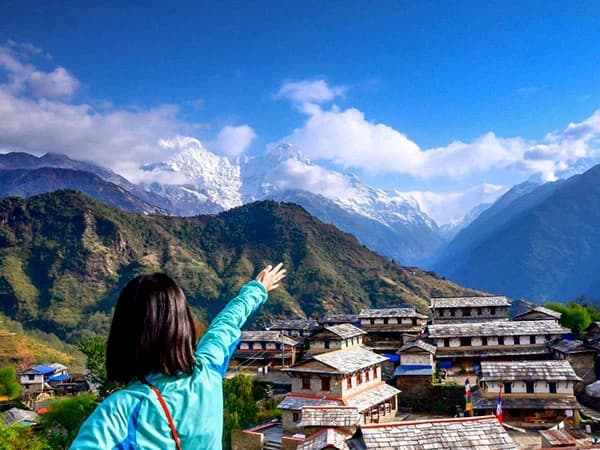Trek Overview
The Annapurna North Base Camp trek is a popular trekking route in the Annapurna region of Nepal, offering a remarkable blend of natural beauty, cultural encounters, and adventure. This trek takes you through varied landscapes, including lush forests, terraced fields, charming villages, and glacial valleys, leading to the base camp nestled in the heart of the Annapurna Sanctuary.
Along the way, trekkers can enjoy panoramic views of snow-capped peaks, experience local hospitality in traditional teahouses, and explore diverse flora and fauna. The highlight of the trek is reaching Annapurna Base Camp, surrounded by towering mountains and providing a sense of accomplishment and serenity in the majestic Himalayas.
The Itinerary of Annapurna North Base Camp Trek is From your First Day of Arrival in Kathmandu. Second Day, drive from Kathmandu to Pokhara. The journey from Kathmandu to Pokhara is a scenic route that takes you from the bustling capital city of Nepal to the picturesque lakeside city of Pokhara. Along the way, pass through diverse landscapes, winding mountain roads, and charming villages, offering glimpses of rural life in Nepal.
Third Day, Drive from Pokhara to Ghasa by a private or public bus. The route offers scenic views of the Annapurna region, passing through valleys, villages, terraced fields, and forests. Fourth day, trek from Ghasa to Riverside Camp. The trail offers lush forests, traditional villages, terraced fields, and stunning mountain views.
Fifth Day trek from Riverside camp to jungle camp The trail typically passes through lush forests, crosses suspension bridges over rivers, and offers views of traditional villages along the way. Sixth-day, trek from Jungle Camp to Miristi Khola. The trail from Jungle Camp to Miristi Khola offers a variety of landscapes, including lush forests, small streams, traditional villages, and terraced fields.
Seventh Day, rest and Acclimatize At Misristi Khola before continuing the trek. Eighth Day, trek from Miristi Khola to Annapurna North Base Camp trek The trek offers stunning views of the surrounding Annapurna Massif, with the landscape becoming more alpine as you approach the base camp.
Ninth, trek back from Annapurna North Base camp to Miristi Khola. Tenth Day trek from Miristi Khola to Jungle Camp. The trail involves a combination of moderate ascents and descents through alpine meadows and forests, gradually transitioning to denser vegetation as you approach Jungle Camp.
Eleventh Day, trek from Jungle Camp to Riverside Camp and Lete. The trail continues to descend, transitioning into more open landscapes, with views of the Dhaulagiri and Annapurna ranges. Twelfth Day, drive back from Lete to Pokhara. The journey involves traveling through winding mountain roads with stunning views of the Annapurna and Dhaulagiri ranges.
Thirteenth Day, Drive Back from Pokhara to Kathmandu. The route takes you through scenic landscapes and picturesque towns. Rest in a Hotel After Reaching Kathmandu. Fourteenth Your Departure from Kathmandu.
During the Annapurna trek, Camping is Essential in most parts of the trek as Lodges and Teahouses are not Available in Most Parts of Trek. The Facilities can Be Basic.
During the Annapurna North Base Camp trek, you will be accompanied by a knowledgeable and experienced local guide who will lead the way, ensure your safety, provide cultural insights, and share information about the surrounding landscapes and landmarks.
The guide will assist with navigation, manage logistics such as accommodations and meals, offer support during challenging sections of the trek, and help you make the most of your adventure in the Himalayas. Having a guide enhances your overall trekking experience by providing valuable assistance, local expertise, and a sense of security along the journey.
The best season for the Annapurna North Base Camp trek is generally considered to be during the spring (March to May) and autumn (September to November) months. During these seasons, you can expect stable weather conditions, clear skies, and moderate temperatures, making for ideal trekking conditions. The stunning views of the Himalayas are often at their best during these months, with blooming rhododendron forests in spring and clear mountain vistas in autumn.
Annapurna North Base Camp trek offers a captivating adventure with stunning mountain views, diverse landscapes, cultural encounters, challenging trails, serene surroundings, and a sense of accomplishment. Trekkers can expect a rewarding journey through the Himalayas, immersing in nature's beauty and experiencing the warmth of Nepali hospitality, creating lasting memories and a deeper connection with the mountains.
Highlights
- Close-up views of Annapurna I, Machapuchare (Fishtail), and other majestic peaks.
- A less-traveled route, offering a more serene trekking experience.
- Journey through lush forests, alpine meadows, and glacial valleys.
- Immersion in traditional Gurung and Magar villages with unique local customs.
- A rewarding endpoint with breathtaking mountain panoramas and a sense of accomplishment.
- This trek combines natural beauty, cultural experiences, and solitude for an authentic Himalayan adventure.
Cost of Annapurna North Base Camp Trek
The cost of the Annapurna North Base Camp Trek varies by package type:
- Basic Package: $700 to USD 1,000 per person, covering basic teahouse accommodation, permits, and a guide.
- Standard Package: $1,200 to USD 1,800 per person, including better accommodation, meals, guide, and porters.
- Luxury Package: $2,000 to USD 3,500 per person, offering premium lodges, gourmet meals, private transportation, and more personalized support.
- Prices may vary depending on group size, season, and specific services included
Specialty of Annapurna North Base Camp Trek
The specialty of the Annapurna North Base Camp trek lies in its unique blend of stunning mountain views, serene landscapes, cultural interactions with local communities, and the sense of accomplishment derived from reaching the base camp situated at the foothills of the majestic Annapurna Himalayas. Additionally, this trek offers an opportunity to explore the tranquil Annapurna Sanctuary, experience diverse terrain ranging from lush forests to alpine meadows, and immerse oneself in the peaceful ambiance of the Himalayan region.
Who is Suitable for Trek?
The Annapurna North Base Camp Trek is suitable for moderately experienced trekkers with good physical fitness and prior high-altitude trekking experience. It’s ideal for those seeking a remote, less-traveled trail with scenic diversity and cultural encounters. Trekkers should be prepared for rugged terrain, long trekking days, and altitudes above 4,000 meters.


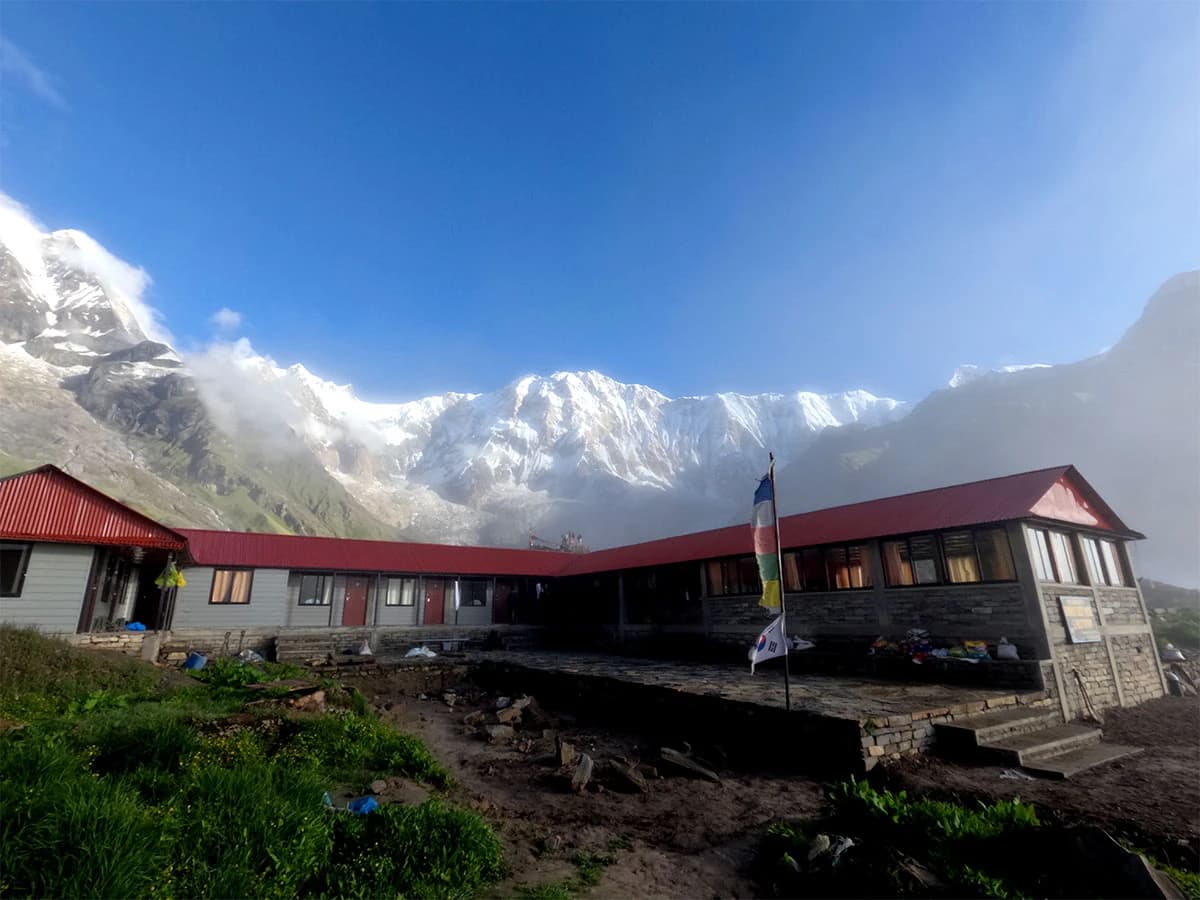
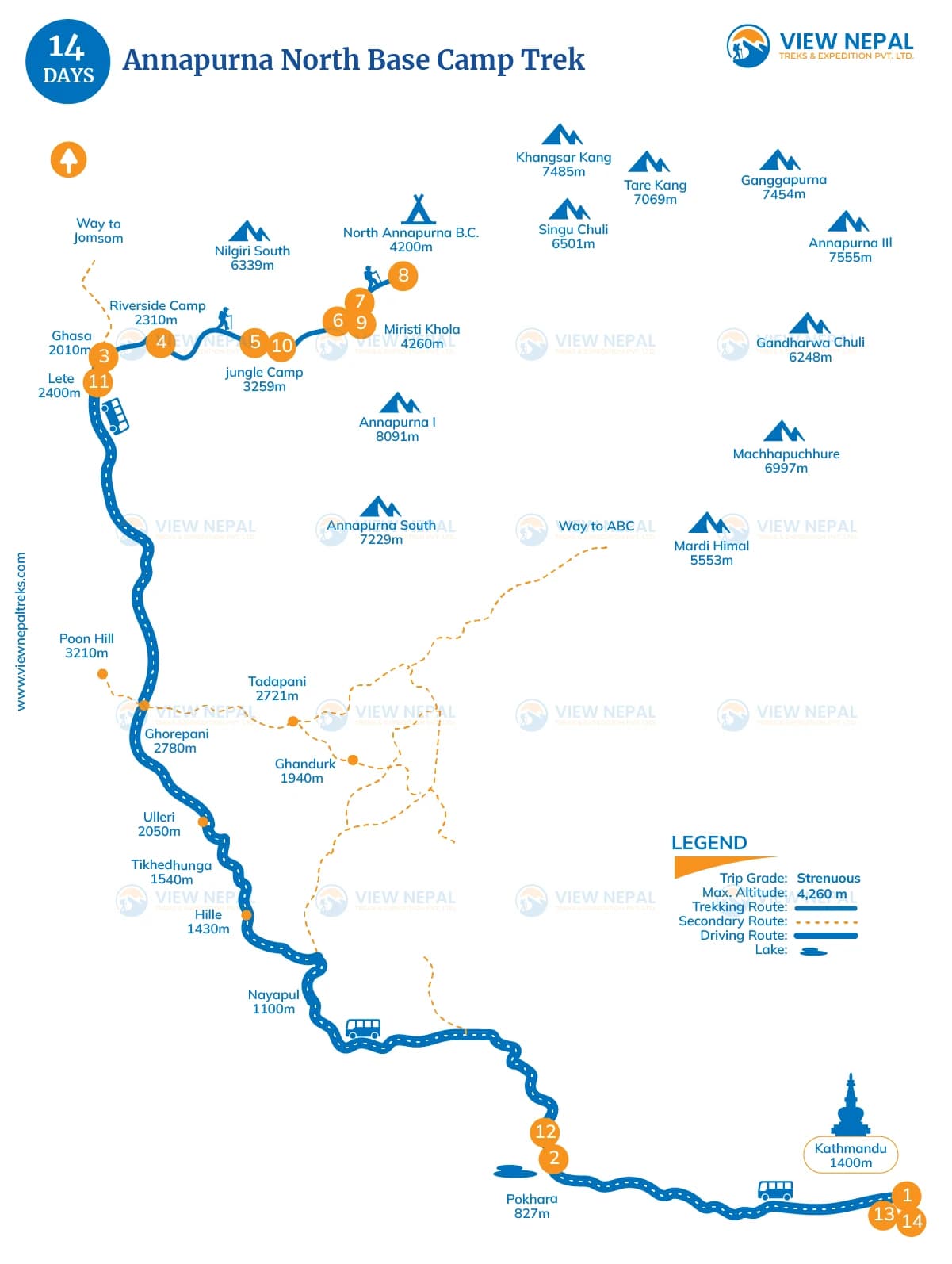
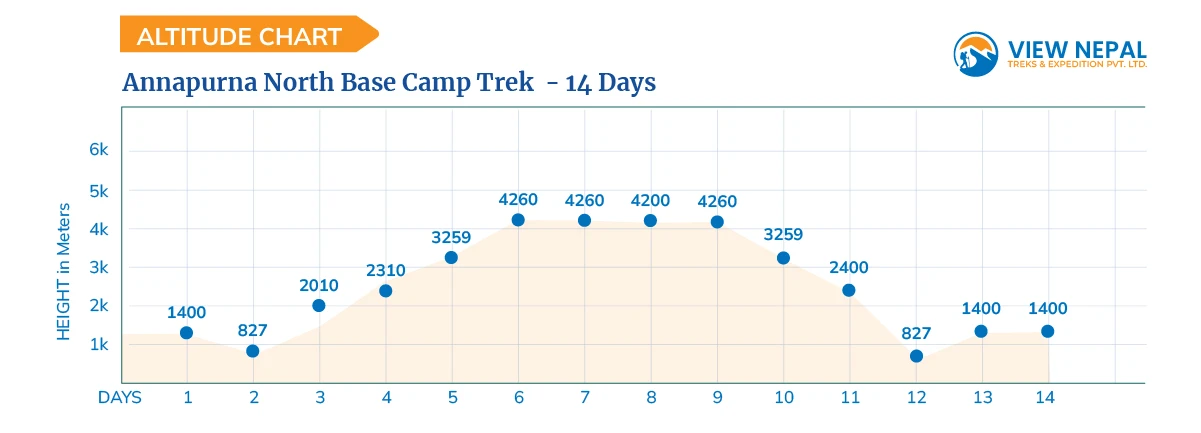

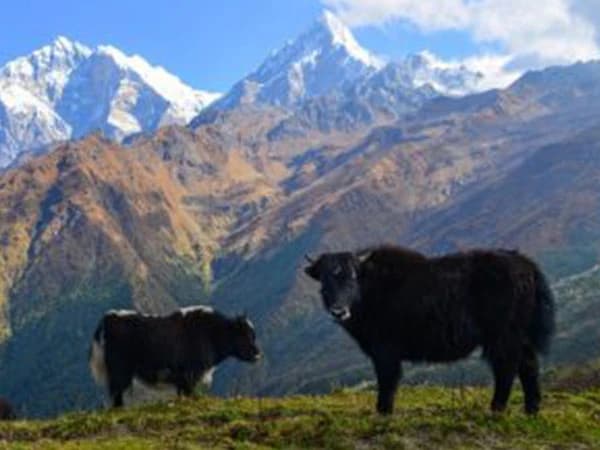
.webp&w=1200&q=75&dpl=dpl_CxxfRaG2N8WHMLZc2DJBWsSsXcmw)
